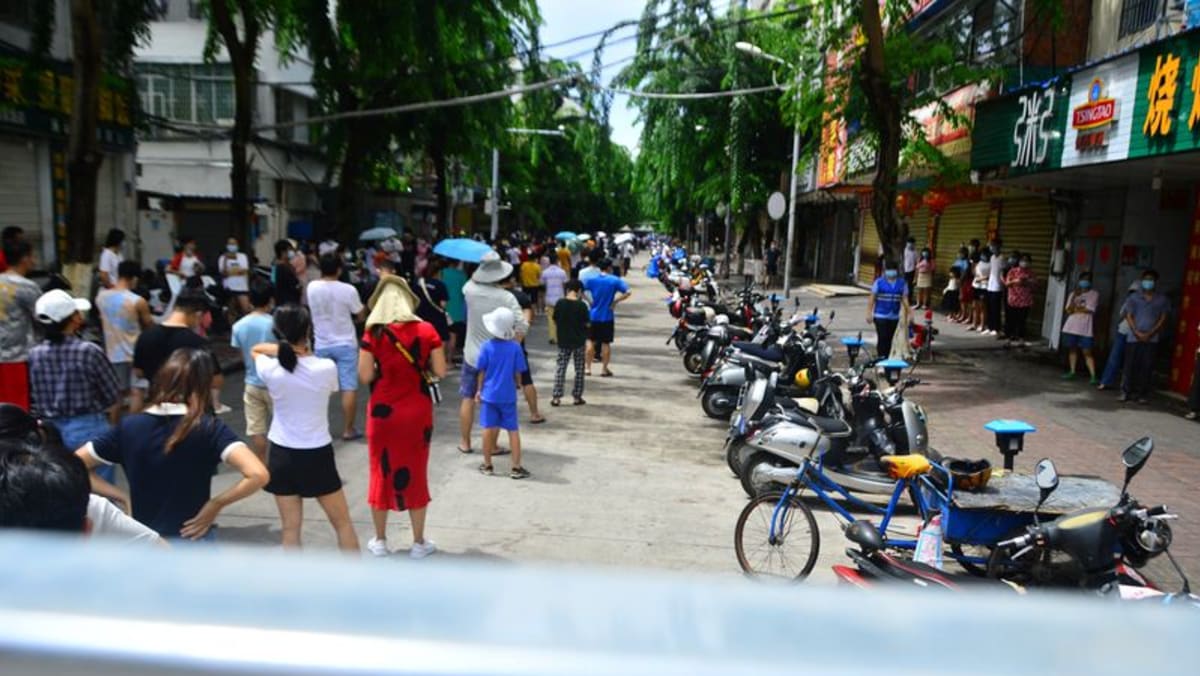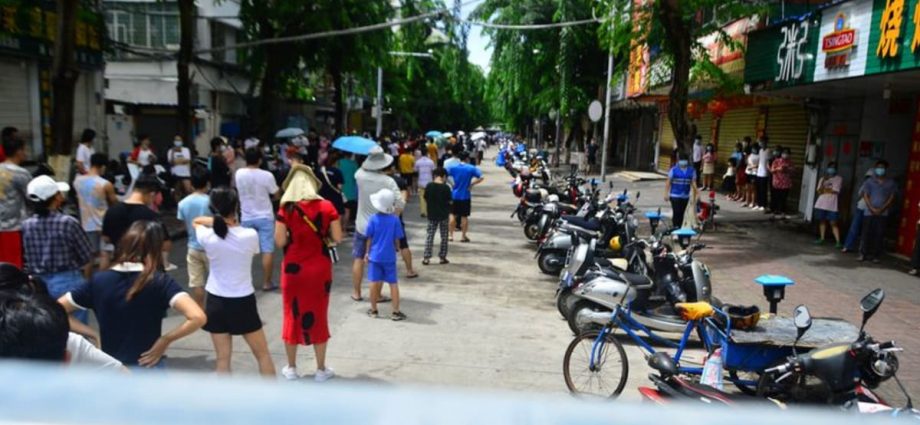
SHANGHAI: China raced on Tuesday (Aug 9) to stamp out COVID-19 outbreaks in the tourist hubs of Tibet and Hainan, with the authorities launching more rounds of mass testing and closing venues to contain the highly transmissible Omicron variant.
Mainland China reported 828 new domestically transmitted cases across more than a dozen provinces and regions for Aug 8, with more than half of them in Hainan, a highly popular tourist destination, official data showed on Tuesday.
Tibet, which until now had reported only one symptomatic case since the pandemic started more than two years ago, has also reported cases.
Parts of Tibet were running mass COVID-19 testing on Tuesday, including its two largest cities Lhasa and Shigatse, where local authorities suspended large events, closed entertainment and religious venues, and shut some tourist sites including the Potala Palace.
Tibetan authorities reported one local patient with confirmed symptoms and 21 local asymptomatic infections on Aug 8. While the caseload was very small compared with elsewhere in China and globally, the rare infections struck a nerve among some residents.
“Although my life and work aren’t affected much and Lhasa took action very quickly, I was still quite shocked, as Tibet had been COVID-19 free for about 920 days,” said Yungchen, a 26-year-old Lhasa resident, who was told by her employer to work from home.
“I was a bit worried, because we don’t know when and where the infected people contracted the virus,” she told Reuters, preferring not to give her full name.
Yungchen said she doesn’t expect a Shanghai-style months-long lockdown in Lhasa, but still bought rice and cooking oil. She bought enough to last four to five days in case she is unable to dine out if COVID-19 restrictions are tightened.
Shigatse, a gateway city to the Everest region in Tibet, has scheduled a “silent period” lasting three days during which people are banned from entering or leaving, and many businesses suspended.
Both Lhasa and Shigatse were conducting a fresh round of mass testing, and the second round begins on Wednesday, state television said on Tuesday.
In Tibet’s western Ngari prefecture, a sparsely populated region that has attracted many pilgrims to Mount Kailash, three towns have started three rounds of mass testing, while the rest have started on their first, state television said.

